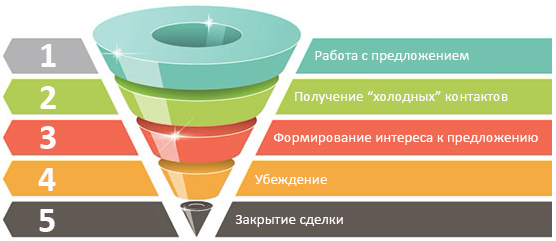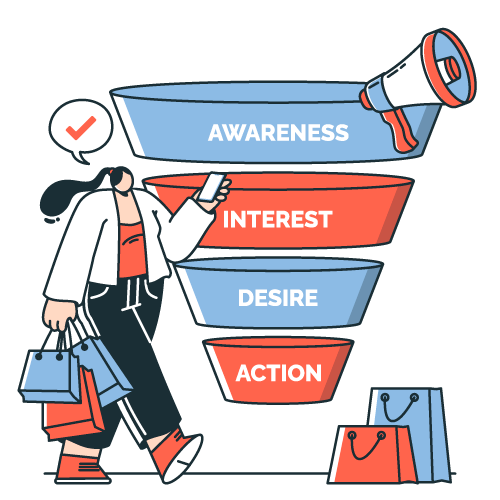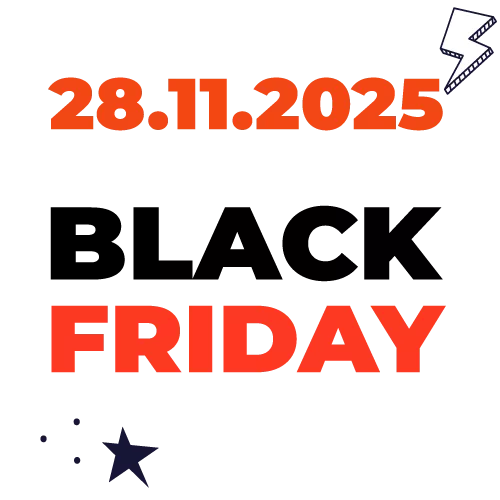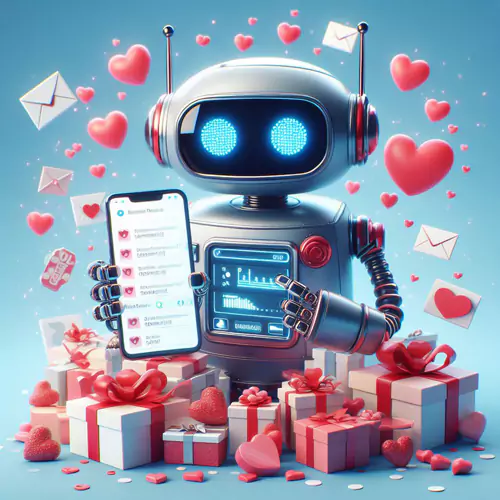The concept of the sales funnel was first discussed in the mid-20th century, and this universal customer behavior model remains relevant today. Understanding the sales funnel is essential for anyone offering goods and services to an audience, whether it's an online sock store, a dog grooming salon, or a fast-food outlet. Here's how one of the fundamental marketing algorithms works and how to make the sales funnel work for you.
The core idea of the "sales funnel" is captured in four words:
- Attention
- Interest
- Desire
- Action
The formula often goes by the acronym AIDA. These four words describe the path a customer takes from first encountering a product to making a purchase. The seller's goal is to make the product attract attention, generate interest, create desire, and ultimately be sold to the consumer.
At each stage of the sales funnel, sellers, marketers, and advertisers "engage" with the audience, addressing their needs at that moment.
The AIDA formula has led to further exploration of consumer desires, resulting in numerous sales funnel modifications. From a marketer's perspective, an effective funnel could look like this:
Creating an offer ➜ Gathering cold leads ➜ Generating interest ➜ Persuasion ➜ Closing the deal.

- In the "Creating an Offer" stage, you develop a Unique Selling Proposition (USP) that might interest the customer. The USP should be specific and original. Generic phrases like "We're high quality and affordable" no longer work. Examples of engaging USPs: "We use a unique leather treatment method for our bags, exclusive in Ukraine. Find a bag of this quality elsewhere, and we'll gift you ours." or "Late delivery? For every extra 10 minutes of waiting, we'll give you a 5% discount on our pizza."
- In the "Cold Leads" stage, you gather basic information about potential customers and introduce them to your business. A good option is a Viber SMS campaign to inform potential customers who might need your product about you and your USP.
- In the "Generating Interest" stage, start interacting with the audience: remind them of your product through various types of advertising, hold tastings, product introduction days, giveaways, and promotions. The goal is to ensure that someone needing your product buys it from you, not a competitor.
- In the "Persuasion" or "Handling Objections" stage, you need to dispel any fears or doubts the customer might have: "Still thinking? Your neighbors have already bought!", "Worried about the price? Find it cheaper elsewhere, and we'll refund your money."
- The "Closing the Deal" stage involves selling the product to a customer you've been "preparing" for the purchase. The goal is to ensure the customer "falls through" the funnel, transforming from an interested party to a client and, ideally, a loyal repeat buyer.
A well-optimized sales funnel and understanding the strengths and weaknesses of your campaigns can help you build a loyal customer base. This VIP audience is invaluable since it doesn't require "warming up" or "enticing," saving you time, money, and resources vital to your business.
Regardless of the funnel variation, its principle boils down to three basic rules:
- As potential buyers move through the funnel stages, most drop out. Out of 1,000 interested people, only a few make a purchase.
- Guiding the consumer to purchase must be sequential; demanding action from an unprepared individual is pointless and ineffective.
- Each funnel stage requires specific advertising principles and audience engagement strategies.
Why Study Your Product's Sales Funnel?
- To know what kind of audience your business needs at the funnel's initial stage to achieve sales.
- To understand how many potential customers drop off at each stage.
- To develop effective advertising campaigns that address current customer needs.
How to Build a Sales Funnel?
If your business targets an online audience, numerous tools, including well-known ones like Google Analytics and Excel, can help you build a sales funnel.
There's also an alternative perspective on sales funnels: some marketers fully trust this tool, while others argue that modern customer behavior isn't linear. Instead of following a direct path to purchase, consumers "wander" through the funnel—moving back and forth, skipping stages, or choosing competitors.
Even if a customer's journey to a product isn't linear, they will still pass through several funnel stages, albeit not sequentially. This further emphasizes the importance of marketers and sellers engaging with all funnel stages and constantly addressing customer needs and desires.





